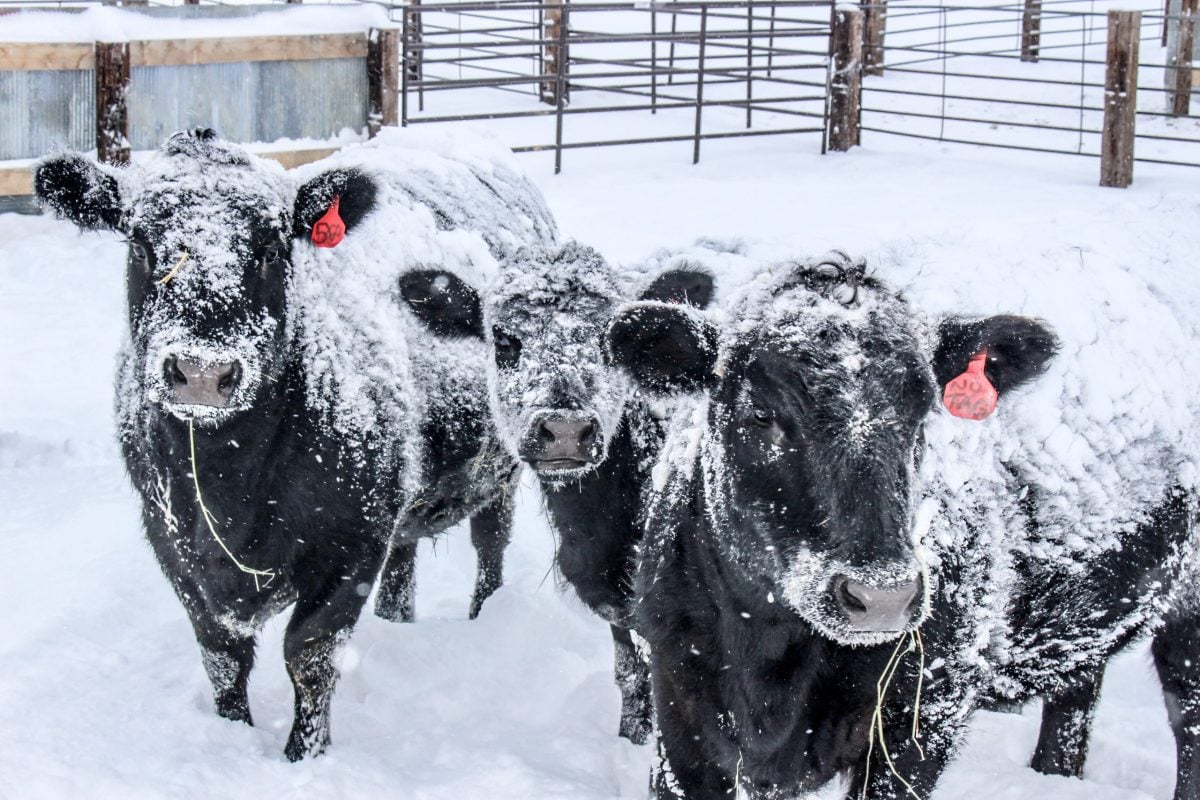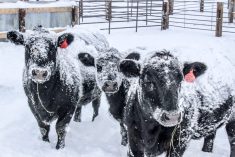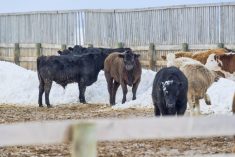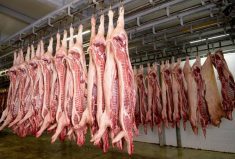Chicago | Reuters — Chicago Mercantile Exchange live cattle futures ended lower on Thursday, extending a pull-back from four-month highs set this week as traders worried about the health of the world economy and softening demand for beef, traders said.
CME October live cattle ended down 1.025 cents at 144.85 cents/lb. and the most-active December contract fell 1.4 cents to settle at 149.35 cents/lb., dropping below chart support at its 50-day moving average (all figures US$).
CME November feeder cattle futures fell 2.275 cents to settle at 178.05 cents/lb.
Read Also

U.S. livestock: Cattle rise, lean hogs mixed
Chicago lean hog futures ended Tuesday mixed while cattle made gains. Most-active February lean hog contracts closed down 0.475 cents…
Livestock traders were digesting news of the Federal Reserve’s move on Wednesday to raise interest rates and its projection of more large increases to come as it fights inflation.
Worries about the economy raised uncertainty about consumer demand for pricy cuts of beef. Wholesale beef prices eased on Thursday afternoon, with choice cuts down 73 cents at $248.40 per hundredweight (cwt), the lowest since March of 2021, according to the U.S. Department of Agriculture (USDA).
In the cash market, fat cattle traded in the southern Plains at $143/cwt, up $1 from the bulk of last week’s trade. While firming cash cattle prices tend to support futures, traders noted the spot October futures contract, hovering near the equivalent of $145/cwt, held a slight premium over cash, a bearish signal.
After the futures market closed, USDA reported U.S. frozen stocks of beef as of Aug. 31 at 515.7 million lbs., up 24 per cent from a year ago, a factor that could pressure futures.
Ahead of Friday’s monthly Cattle on Feed report, analysts surveyed by Reuters on average expect USDA to report the number of cattle in U.S. feedlots at 11.234 million head as of Sept. 1, steady with a year earlier. August marketings were seen at 105.9 per cent of a year earlier while placements were seen at 97.3 per cent of a year ago.
CME lean hog futures declined on Thursday, pressured by a strong hog slaughter pace this week and macroeconomic worries.
“The seasonal increase in hog supplies, and the fact that the hog slaughter this week is running above a year ago by a fair amount, is definitely a negative market factor,” said Doug Houghton, analyst at Brock Capital Management.
CME October lean hogs settled down 0.3 cent at 94.125 cents/lb. and benchmark December hogs fell 0.775 cent to end at 85.675 cents/lb., dropping below support at its 40- and 50-day moving averages.
Traders await USDA’s Sept. 29 quarterly hogs and pigs report.
— Julie Ingwersen is a Reuters commodities correspondent in Chicago.















